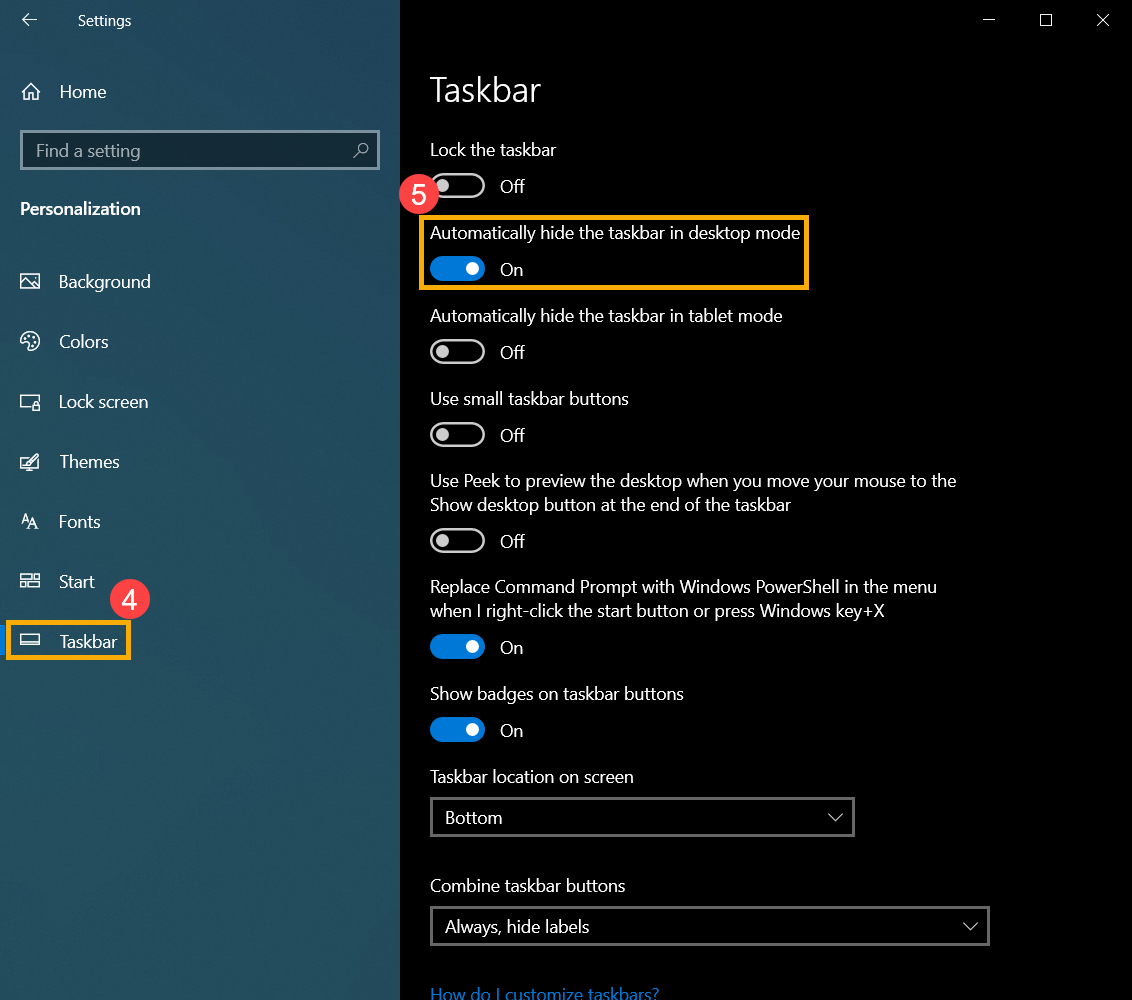Related Topics
[Notebook] The related settings of screen saver/maintenance
Via the screen saver/maintenance settings, it helps to avoid causing the “burn-in” symptom due to showing the same static and high contrast image for a long time, and also helps to optimize the maximize battery life and extend your laptop’s lifespan. (Some models may be set by default when manufactured.)
To provide you more detailed instruction, you can also click ASUS YouTube video link below to know more about How to protect ASUS OLED Monitors.
https://www.youtube.com/watch?v=qEaKus4ndhY
Please go to the corresponding instruction based on the current Windows operating system on your computer:
ASUS OLED Care *It supports some models with OLED panel.
ASUS OLED Care is a special screensaver, which significantly reduces the chances of OLED screen aging, and you can turn it on in MyASUS app. Here you can learn more about the Introduction of Device Settings in MyASUS.
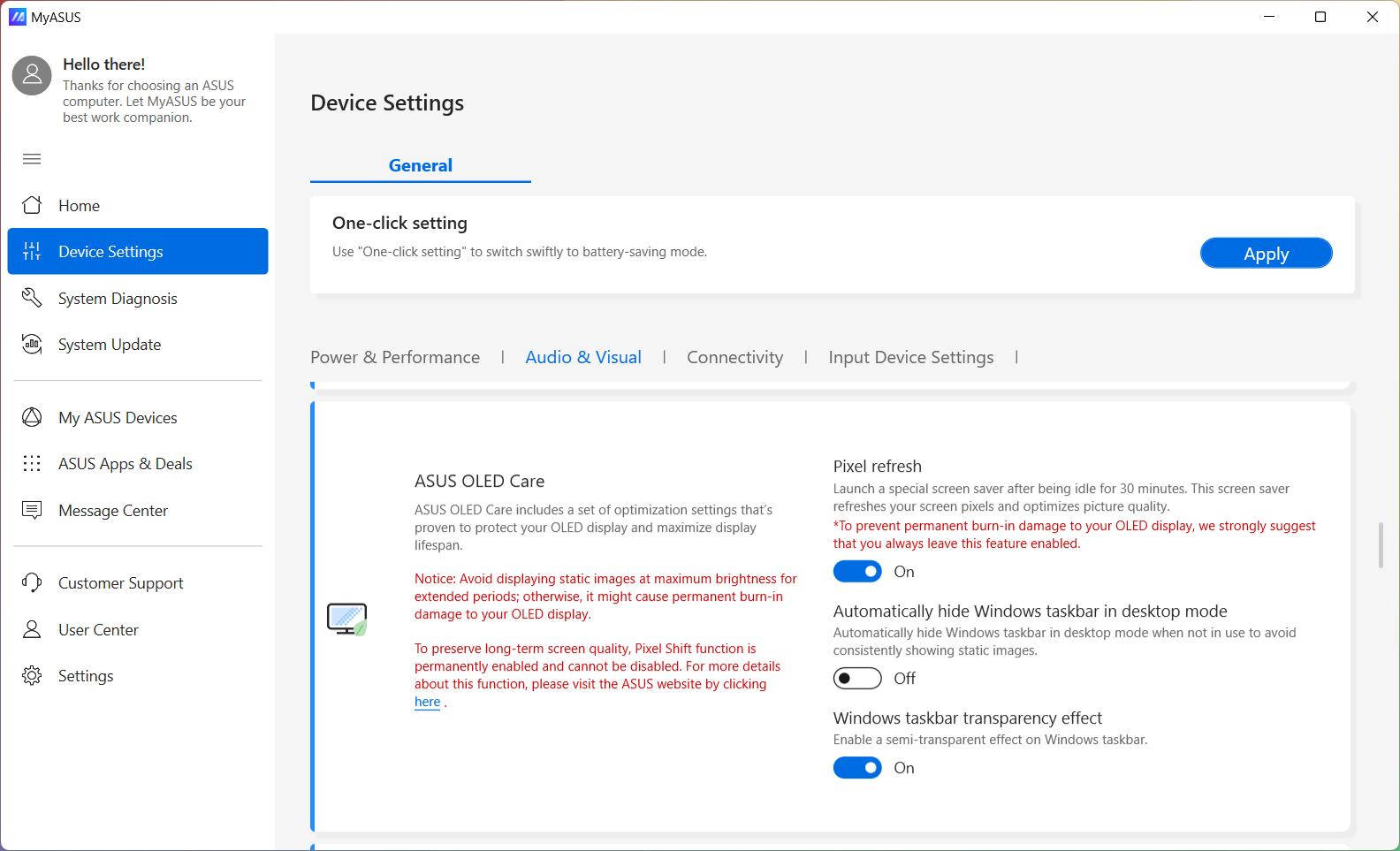
Note: If you experience that the Windows taskbar transparency effect couldn’t apply accordingly, please press the Windows key (Win key) on the keyboard to solve it.
on the keyboard to solve it.
Dark mode in Windows
- Click the [Start]
 icon① on the taskbar, then select [Settings]
icon① on the taskbar, then select [Settings] ②.
②. 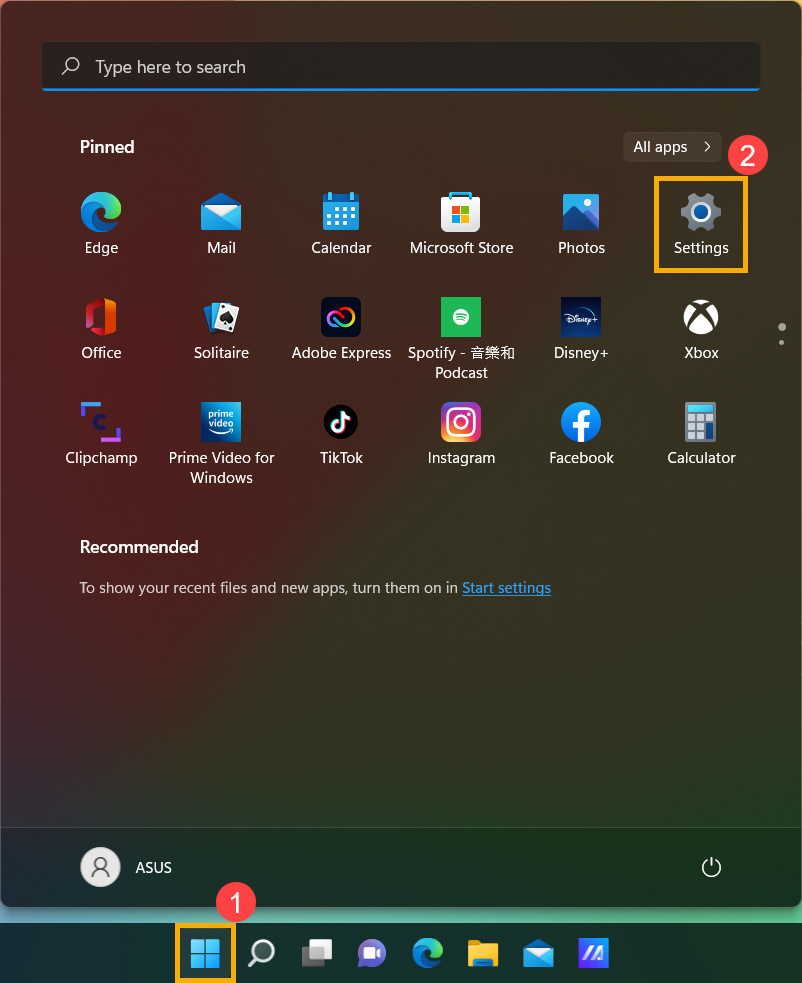
- Select [Personalization]③, then select [Colors]④.
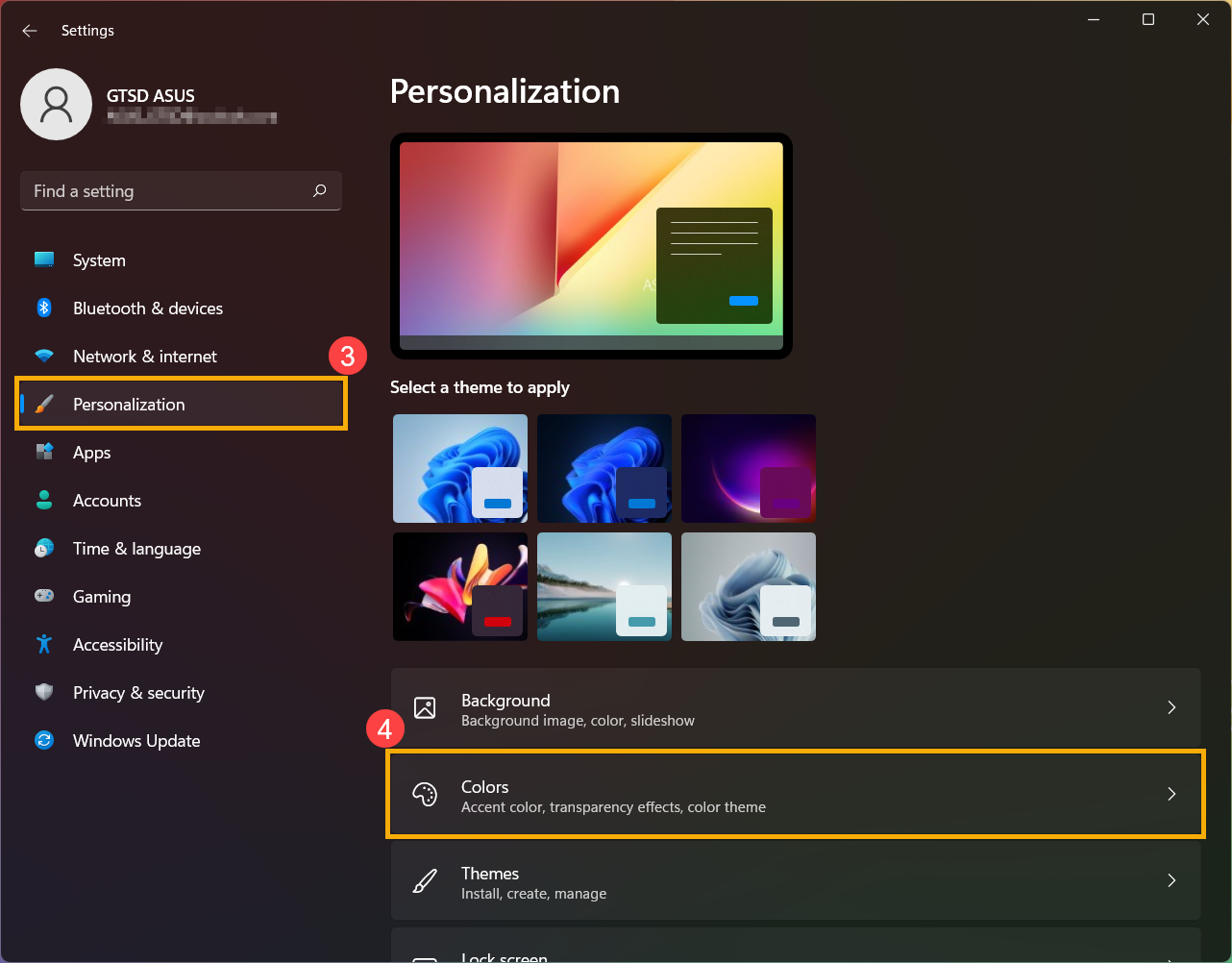
- On the Choose your mode option, choose your color to [Dark]⑤.
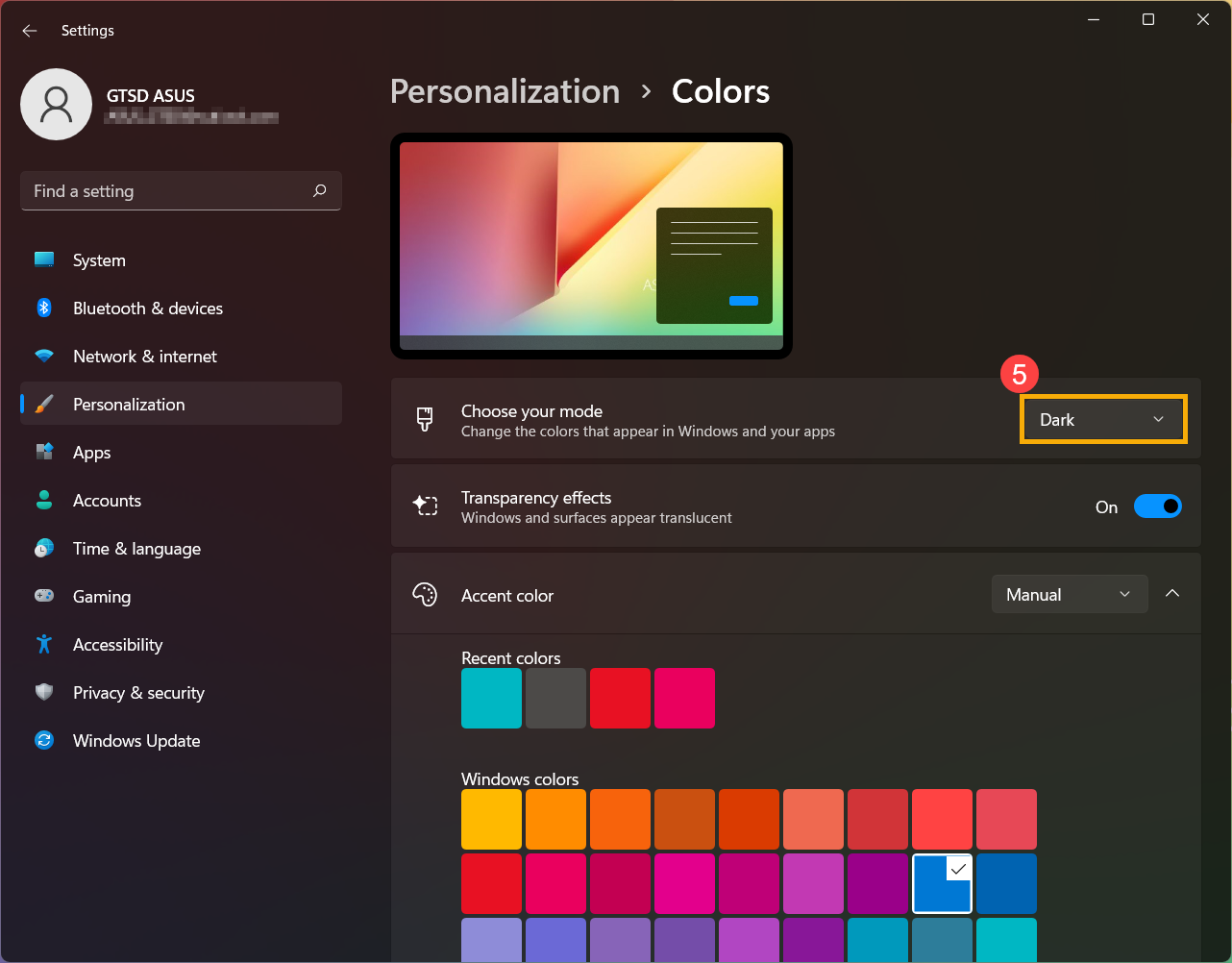
Dark mode in Microsoft Office
- Launch a Microsoft Office application, then select [File]①.
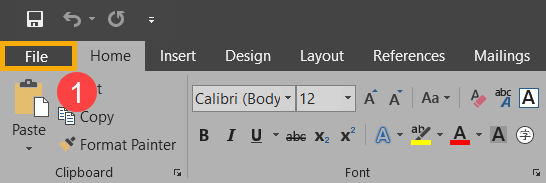
- Select [Account]②, then choose Office Theme to [Dark Gray]③.
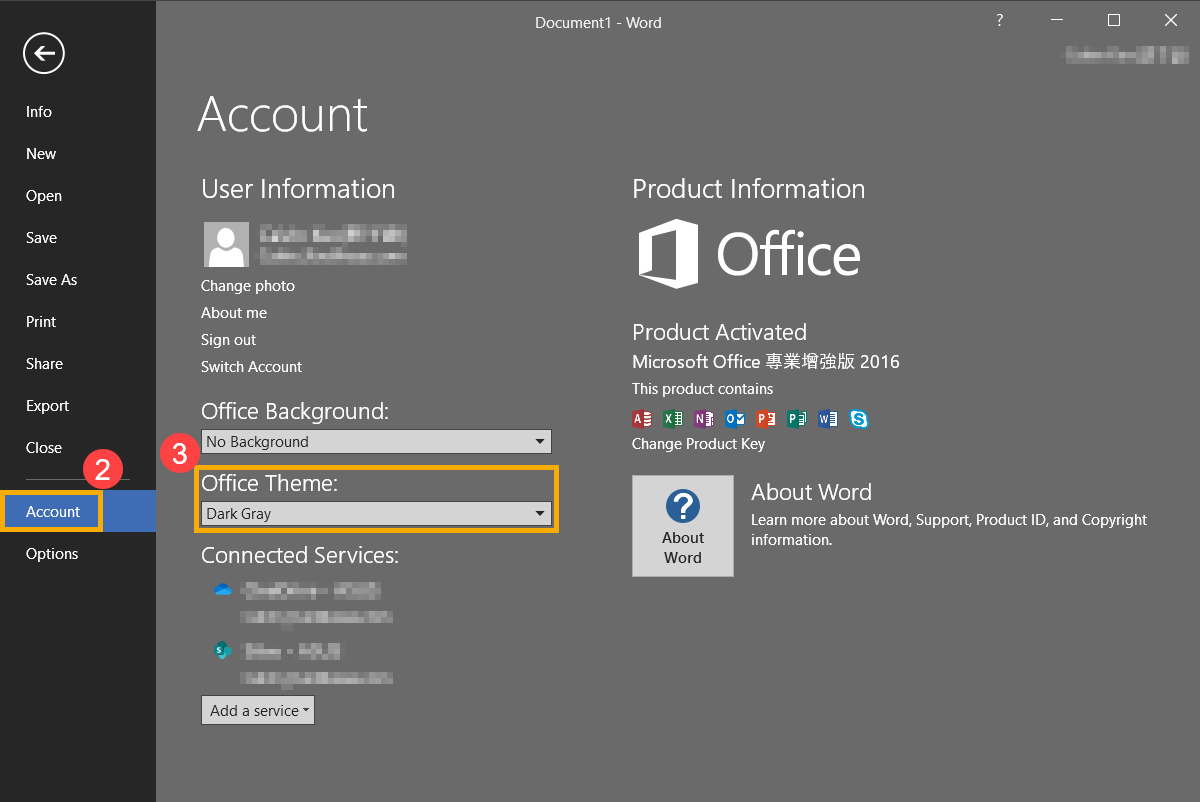
The time to turn off the display
- Click the [Start]
 icon① on the taskbar, then select [Settings]
icon① on the taskbar, then select [Settings] ②.
②. 
- Select [System]③, then select [Power & battery]④.

- Expand the Screen and sleep option, then set as “On battery power, turn off the screen after [5 minutes]”⑤ and “When plugged in, turn off the screen after [5 minutes]”⑥.
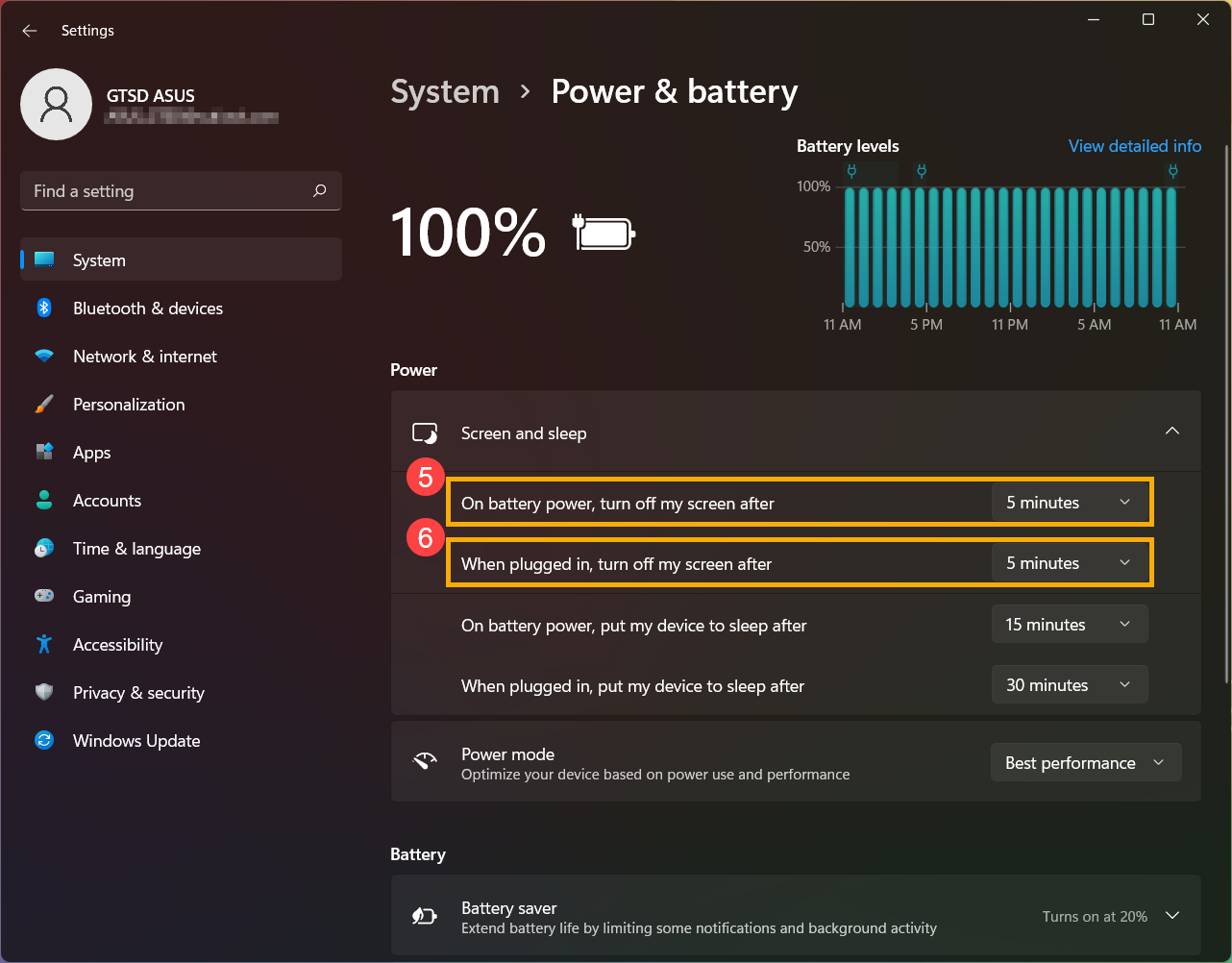
Screensaver
We recommend that you adjust the display brightness to complement the ambient lighting in your environment, rather than keeping the screen at maximum brightness at all times. To maximize your screen’s lifespan, we’d also suggest using a screensaver with an animation on a dark background (such as 3D Text).
- Click the [Start]
 icon① on the taskbar, then select [Settings]
icon① on the taskbar, then select [Settings] ②.
②. 
- Select [Personalization]③, then select [Lock screen]④.
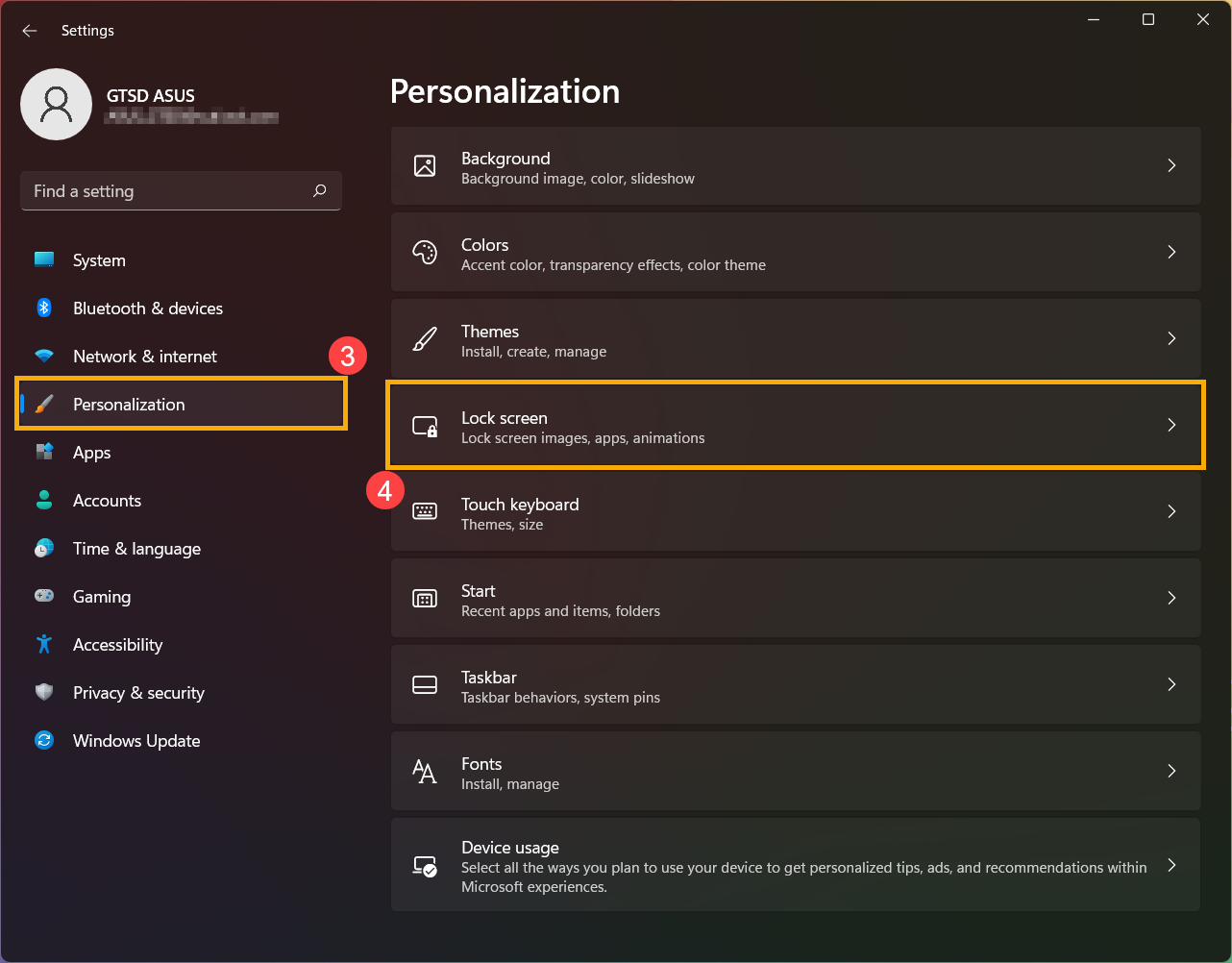
- Select [Screen saver]⑤.

- Set the animation of screen saver to [3D Text]⑥, then select [OK]⑦.
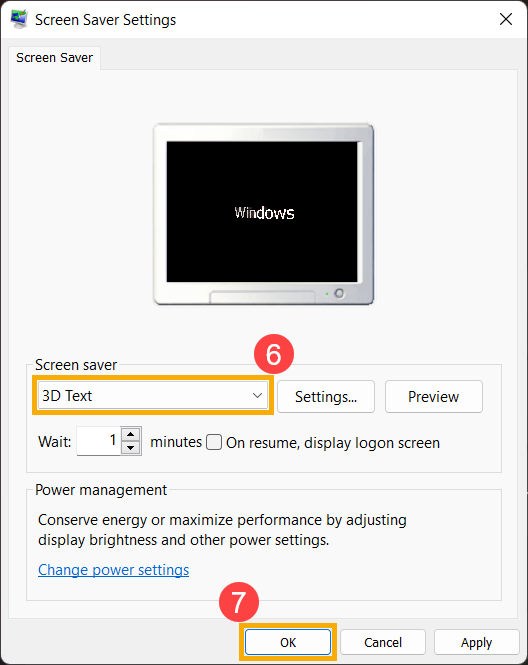
Hide Windows Taskbar
Auto-hide Windows Taskbar helps to decrease a static image is continuously displayed for prolonged periods of time.
- Click the [Start]
 icon① on the taskbar, then select [Settings]
icon① on the taskbar, then select [Settings] ②.
②. 
- Select [Personalization]③, then select [Taskbar]④.
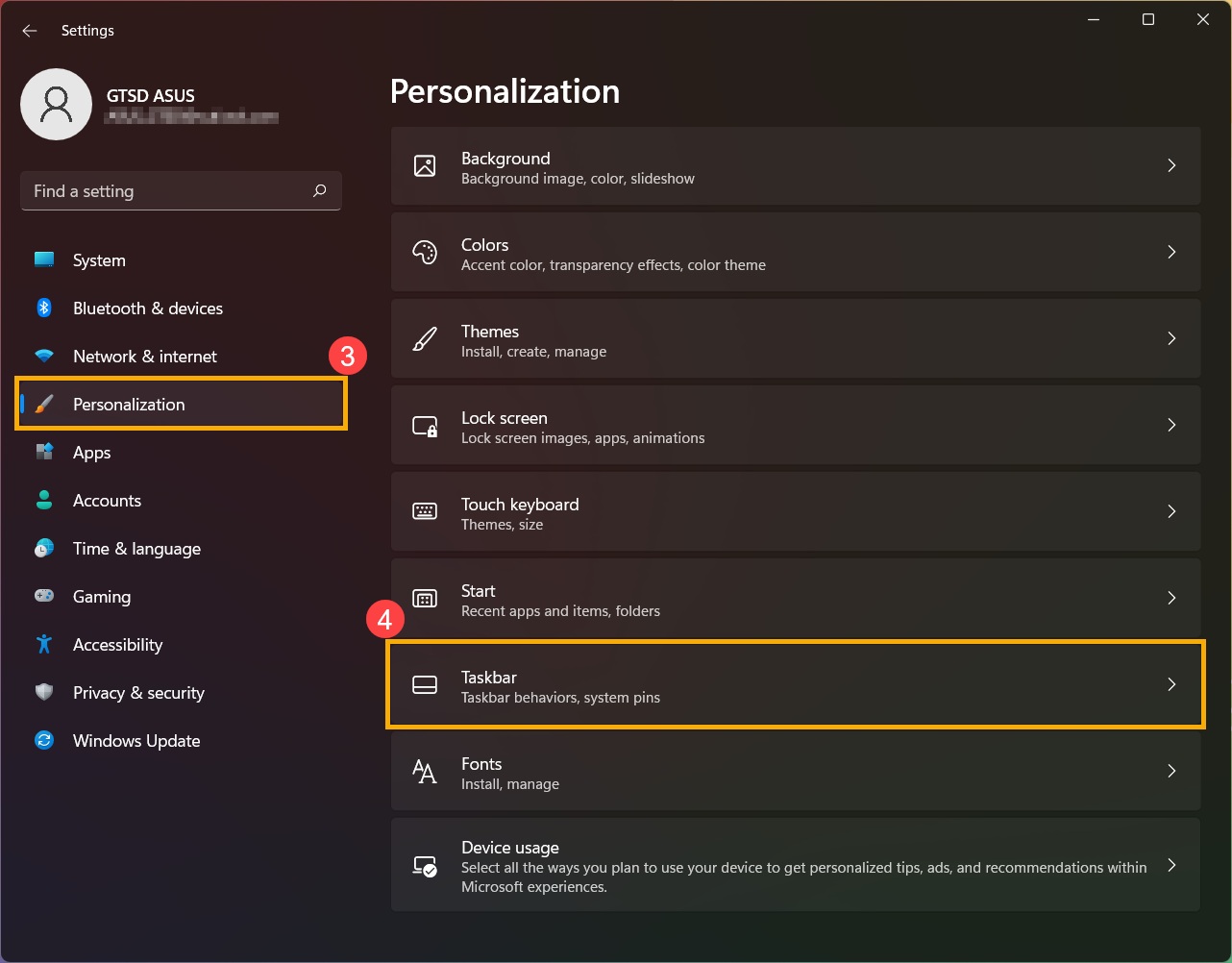
- Expand the Taskbar behaviors option, then check the box in front of [Automatically hide the taskbar]⑤.
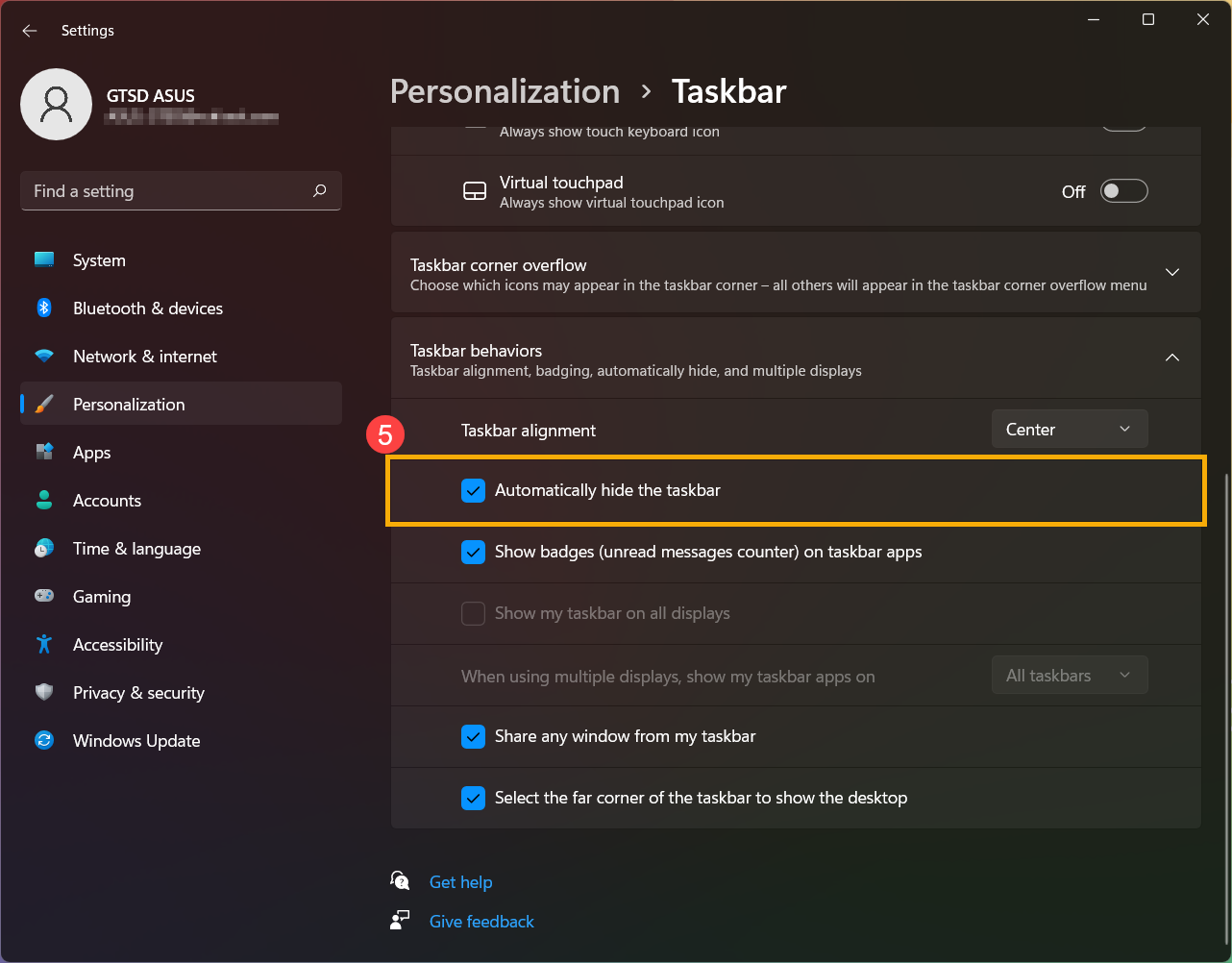
ASUS OLED Care *It supports some models with OLED panel.
ASUS OLED Care is a special screensaver, which significantly reduces the chances of OLED screen aging, and you can turn it on in MyASUS app. Here you can learn more about the Introduction of Device Settings in MyASUS.

Note: If you experience that the Windows taskbar transparency effect couldn’t apply accordingly, please press the Windows key (Win key) on the keyboard to solve it.
on the keyboard to solve it.
Dark mode in Windows
- Click the [Start]
 icon① which is located at the far-left of the taskbar, then select the [Settings]
icon① which is located at the far-left of the taskbar, then select the [Settings] icon②.
icon②. 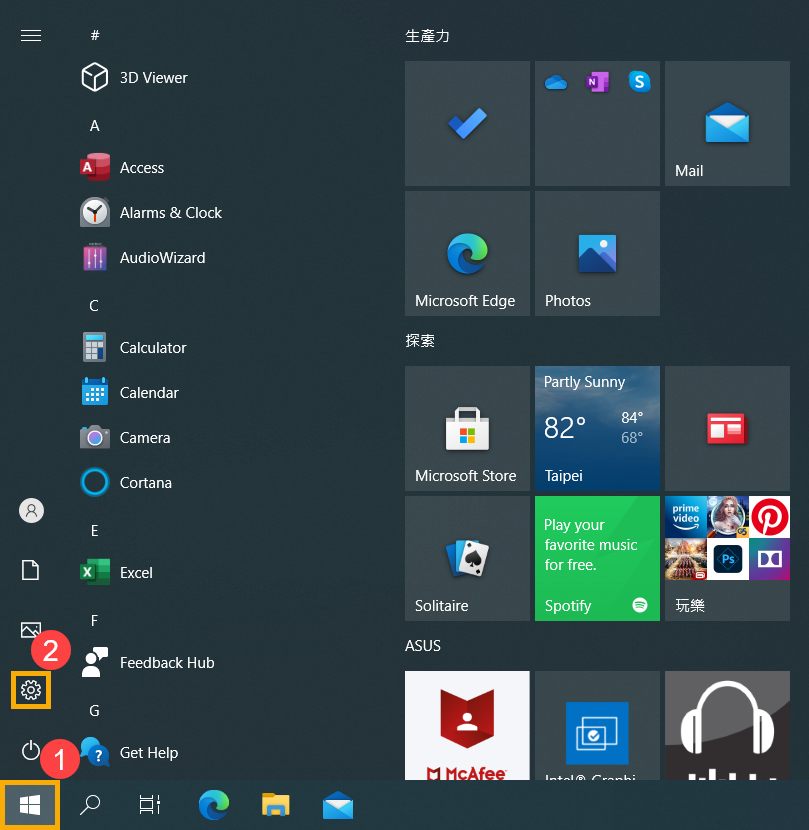
- Select [Personalization]③.
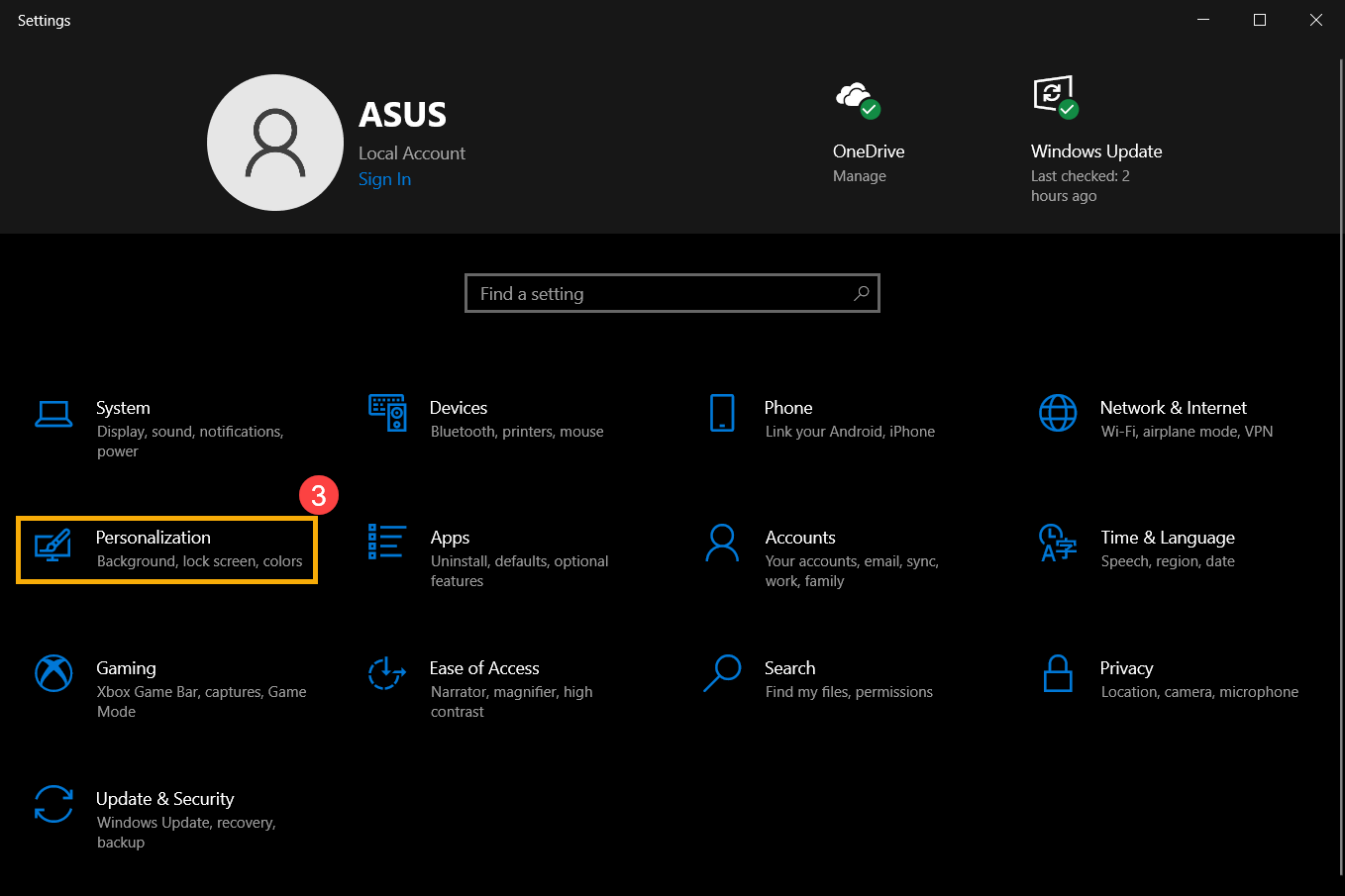
- Select [Colors]④, then choose your color to [Dark]⑤.
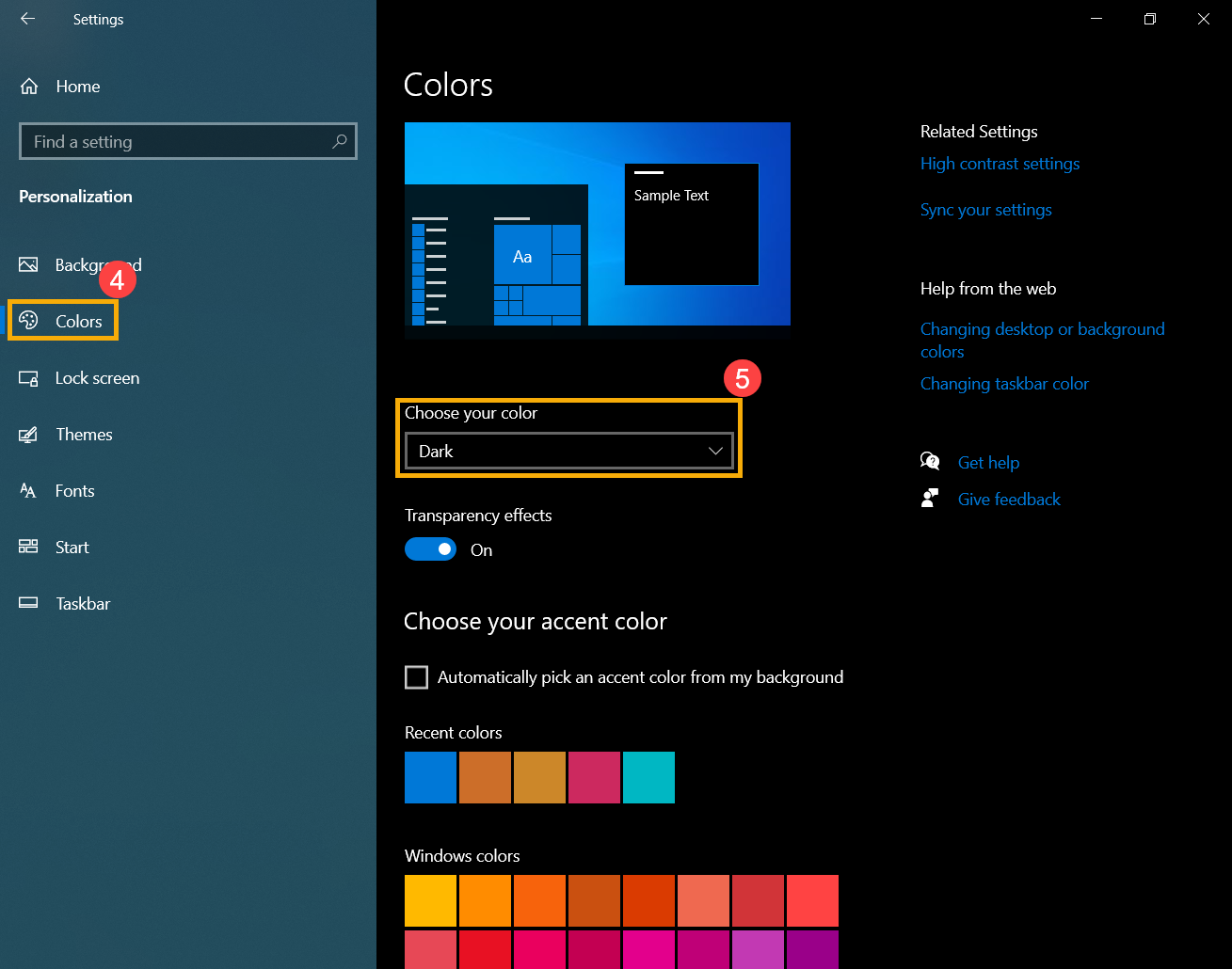
Dark mode in Microsoft Office
- Launch a Microsoft Office application, then select [File]①.

- Select [Account]②, then choose Office Theme to [Dark Gray]③.

The time to turn off the display
- Click the [Start]
 icon① which is located at the far-left of the taskbar, then select the [Settings]
icon① which is located at the far-left of the taskbar, then select the [Settings] icon②.
icon②. 
- Select [System]③.
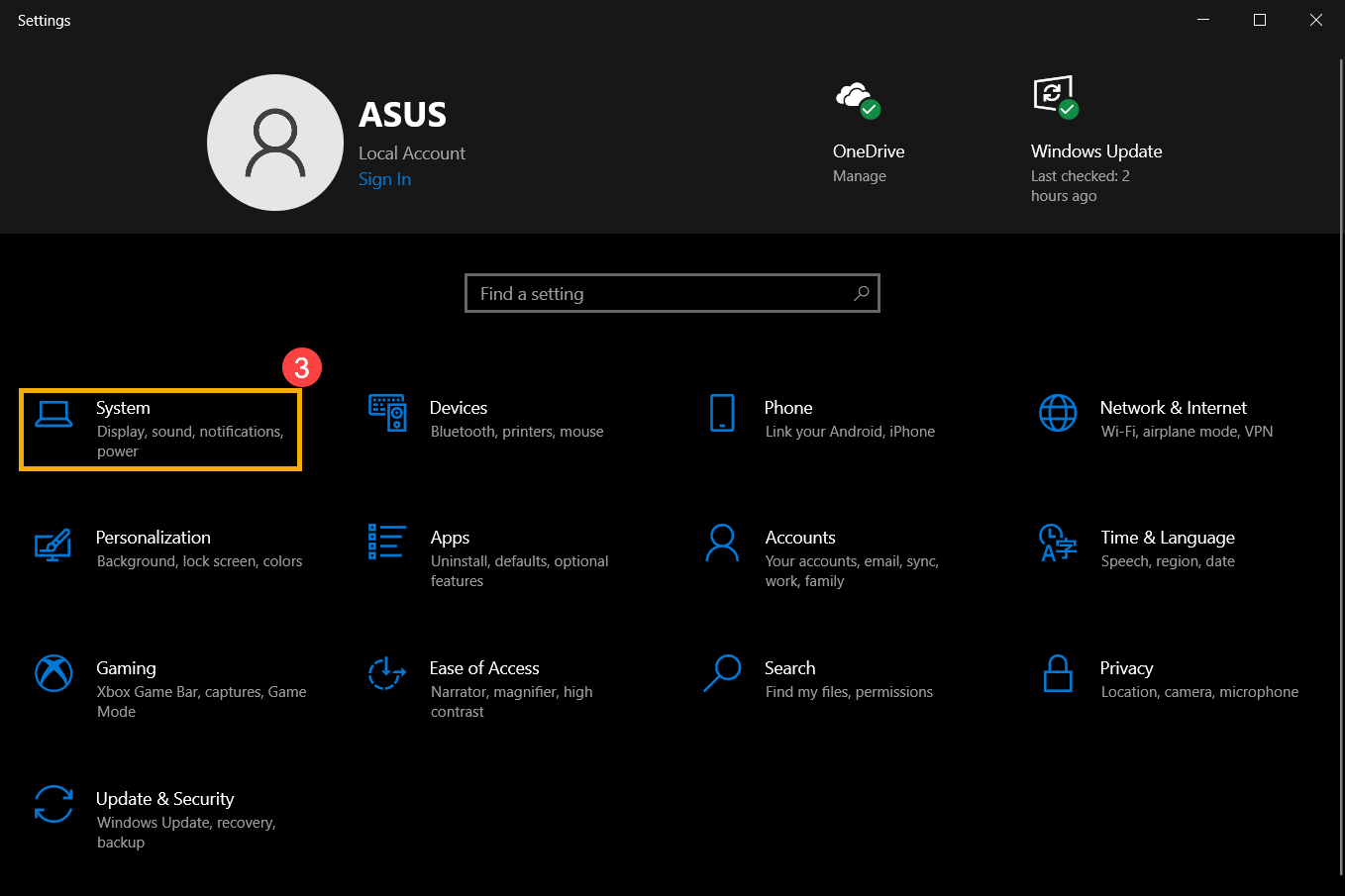
- Select [Power & sleep]④, then set as “On battery power, turn off the display after [4 minutes]”⑤ and “When plugged in, turn off the display after [5 minutes]”⑥.
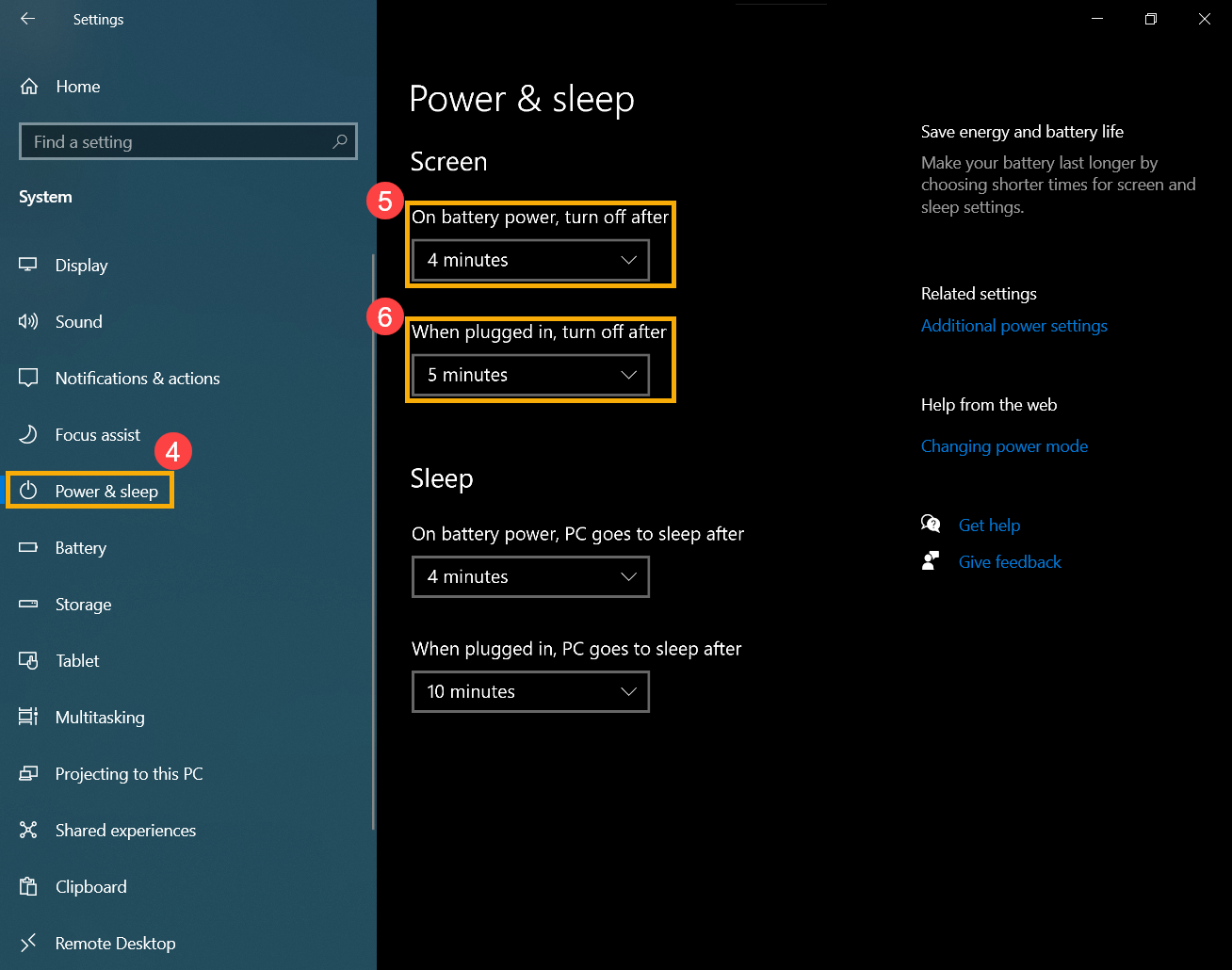
Screensaver
We recommend that you adjust the display brightness to complement the ambient lighting in your environment, rather than keeping the screen at maximum brightness at all times. To maximize your screen’s lifespan, we’d also suggest using a screensaver with an animation on a dark background (such as 3D Text).
- Click the [Start]
 icon① which is located at the far-left of the taskbar, then select the [Settings]
icon① which is located at the far-left of the taskbar, then select the [Settings] icon②.
icon②. 
- Select [Personalization]③.
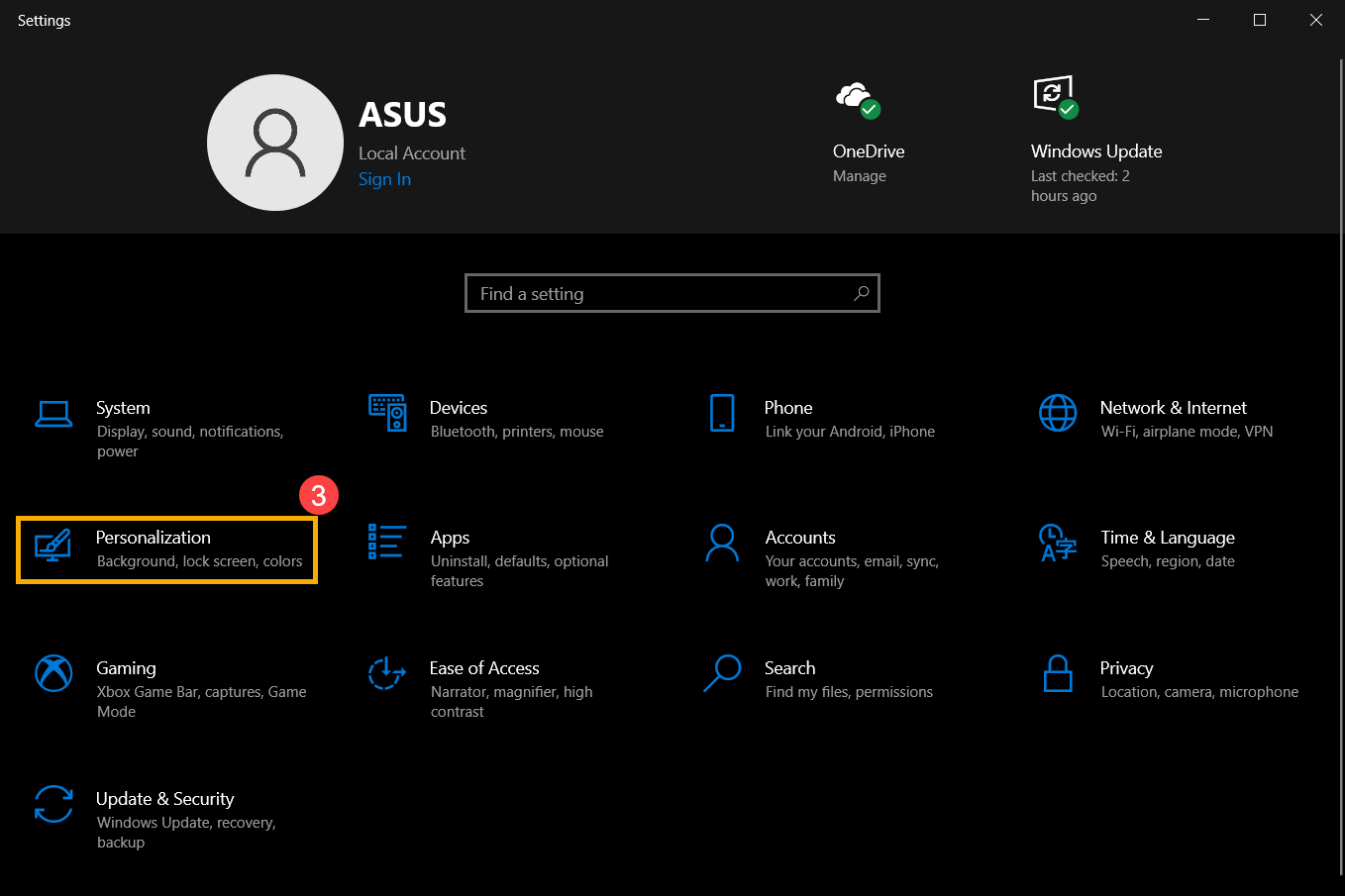
- Select [Lock screen]④, then select [Screen saver settings]⑤.
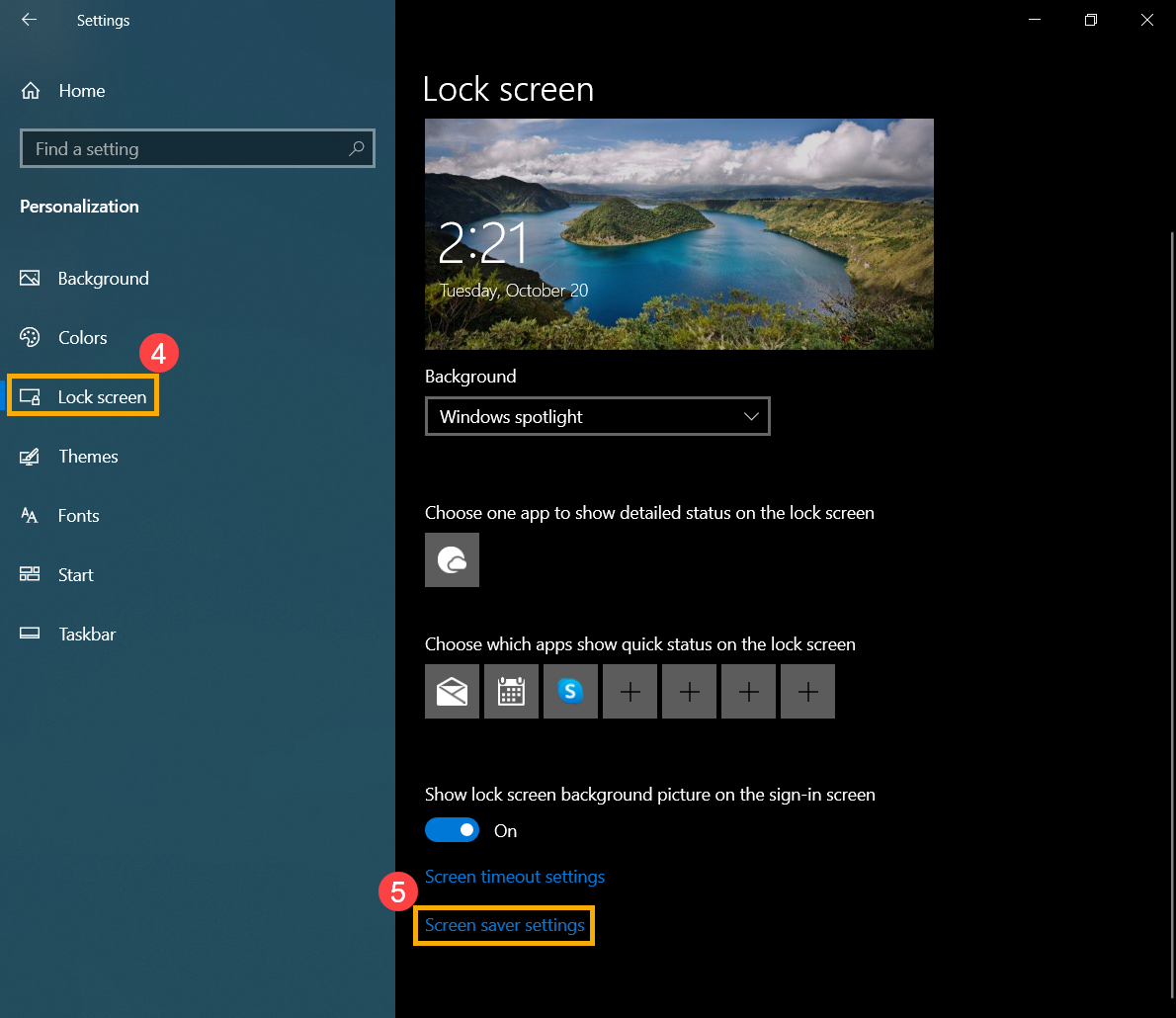
- Set the animation of screen saver to [3D Text]⑥, then select [OK]⑦.
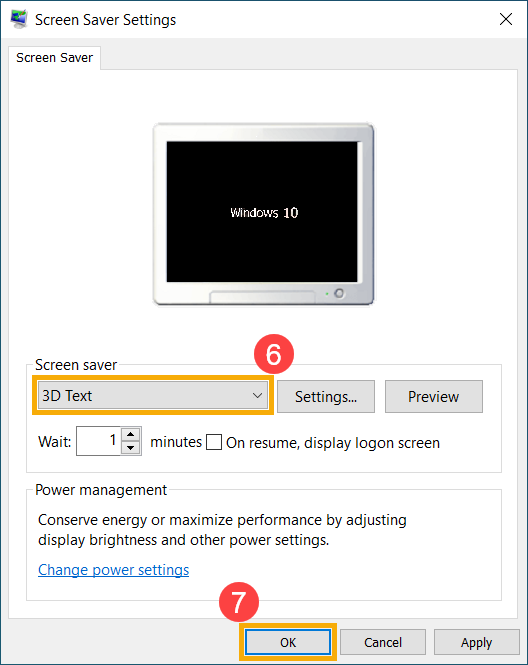
Hide Windows Taskbar
Auto-hide Windows Taskbar helps to decrease a static image is continuously displayed for prolonged periods of time.
- Click the [Start]
 icon① which is located at the far-left of the taskbar, then select the [Settings]
icon① which is located at the far-left of the taskbar, then select the [Settings] icon②.
icon②. 
- Select [Personalization]③.

- Select [Taskbar]④, then set the [Automatically hide the taskbar in desktop mode] setting to On⑤.
